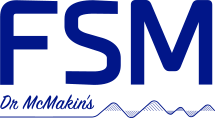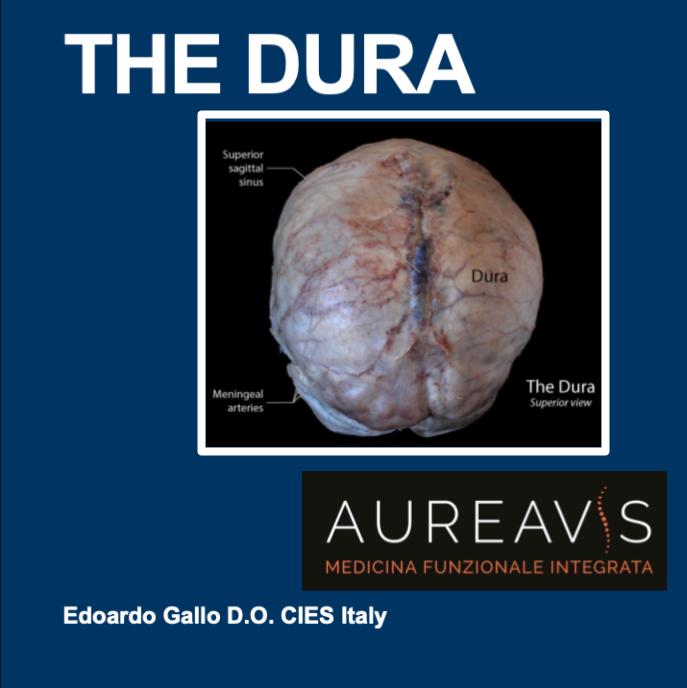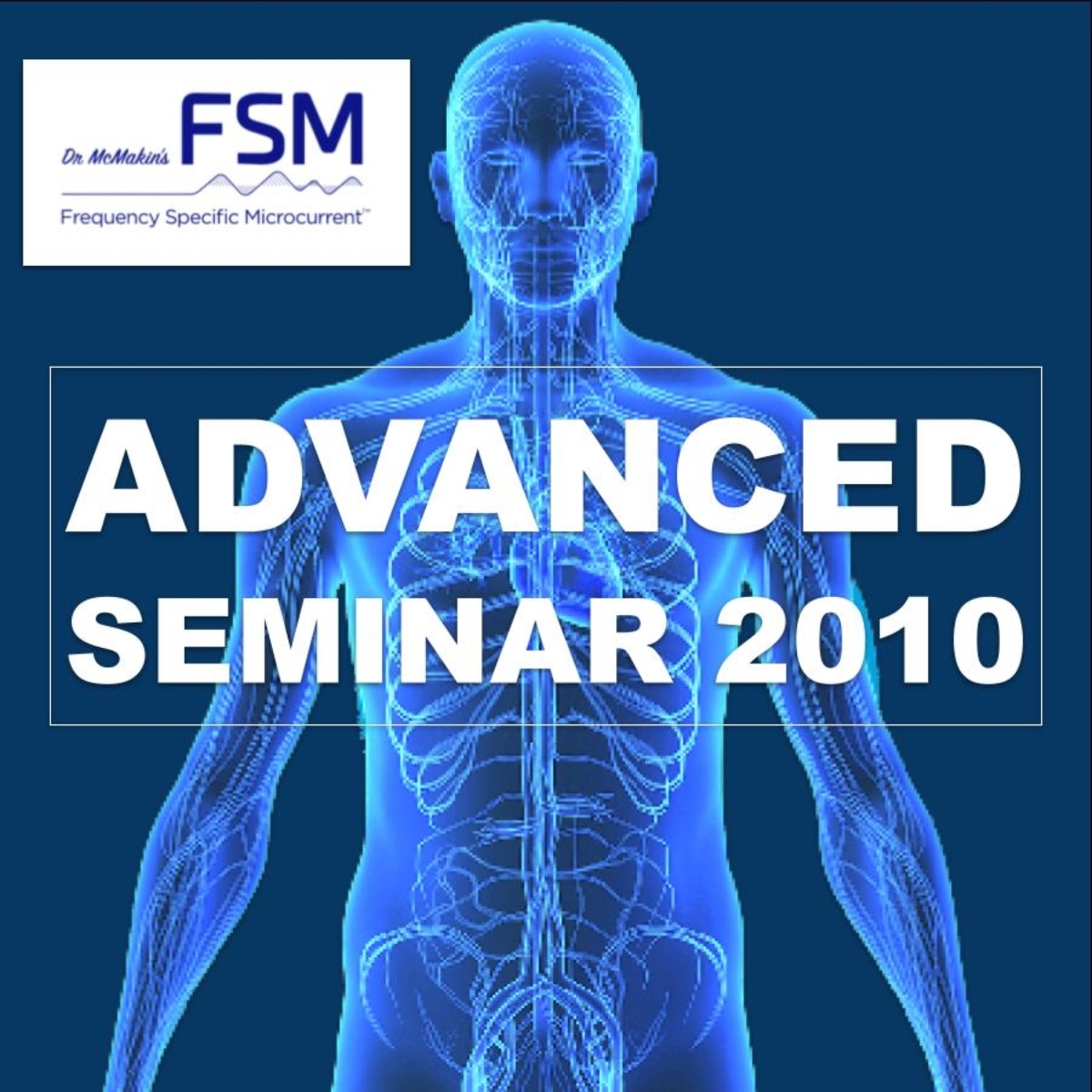Course Syllabus: The Dura and Frequency Specific Microcurrent
Clinical Applications and Strategies
Course Overview
This presentation explores the anatomy, physiology, and clinical significance of the dura mater and its treatment using Frequency Specific Microcurrent (FSM). The course extends concepts from the core FSM seminar with emphasis on craniosacral system biomechanics and practical treatment strategies.
Learning Objectives
Upon completion, participants will be able to:
- Understand the anatomical structure and function of the meninges
- Recognize the biomechanical relationships between the dura, cranium, and spine
- Identify dural restrictions through clinical assessment
- Apply FSM protocols for treating dural adhesions
- Integrate manual techniques with FSM treatment
Module 1: Historical Context and Foundation (10 minutes)
- Overview of osteopathic pioneers:
- Dr. Andrew Taylor Still’s cerebrospinal fluid concepts
- Dr. William Garner Sutherland’s cranial research
- Dr. Viola Frymann’s rhythm detection
- Modern evidence for cranial rhythmic movements
- The three rhythmic movements in the body
Module 2: Meningeal Anatomy (15 minutes)
- Three layers of meninges:
- Anatomical spaces:
- Dural infoldings:
- Dural attachments and clinical significance
Module 3: Neurovascular Relationships (10 minutes)
- Dural innervation patterns:
- Vascularization:
- Cranial foramina and their contents
- Clinical implications for referred pain
Module 4: Biomechanics and Integration (10 minutes)
- Craniosacral rhythm mechanics
- Visual system and neck muscle relationships
- Stomatognathic system connections
- Myofascial lines and dural connections
- Postural influences on CSF production
Module 5: The Glymphatic System (10 minutes)
- CSF production and circulation
- Brain waste clearance mechanisms
- Sleep and REM state importance
- Astrocyte and microglia functions
- Neurodegenerative disease connections
Module 6: Clinical Assessment (15 minutes)
- Identifying dural restrictions:
- Understanding adhesion patterns
- Recognizing postural compensations
Module 7: FSM Treatment Protocols (20 minutes)
- Frequency combinations:
- (Dura)
- (Neck)
- (Sclerosis in adipose tissue)
- (Arachnoid)
- Machine setup and positioning
- Treatment timing and progression
- Integration with manual techniques
Module 8: Manual Techniques (15 minutes)
- Cranial bone mobilization:
- Cervical mobilization
- Hip mobilization for dural release
- Seated dural release techniques
Module 9: Case Study Analysis (15 minutes)
- Patient presentation: 2008 sports injury with failed fusion
- Assessment findings
- Treatment approach and progression
- Outcome measurements
- Clinical pearls and troubleshooting
Required Prerequisites
- Completion of FSM Core Seminar
- Basic understanding of craniosacral anatomy
- Familiarity with FSM equipment operation
Recommended Reading
- Osteopathic texts on craniosacral therapy
- Current research on glymphatic system function
- FSM protocol manuals
Clinical Applications
- Chronic pain syndromes
- Post-surgical adhesions
- Headache and migraine
- TMJ dysfunction
- Postural disorders
- Sleep disturbances
- Neurodegenerative disease prevention
Assessment Methods
- Practical demonstration of assessment techniques
- Case study analysis
- Integration of FSM with manual therapy
Equipment Requirements
- FSM devices (minimum 2-3 machines recommended)
- Treatment table
- Towels for positioning
- Access to FSM frequency protocols
Presenter
Edoardo Gallo, D.O.
CIES Italy
Specialist in osteopathic medicine and FSM integration
Duration
1 hour intensive presentation with practical demonstrations
Target Audience
Healthcare practitioners certified in FSM seeking advanced treatment strategies for dural and craniosacral dysfunction
Q&A: The Dura and Frequency Specific Microcurrent
Frequently Asked Questions for Prospective Viewers
General Questions
Q: What is this presentation about? A: This is an advanced clinical presentation that teaches how to identify and treat dural (protective brain/spinal membrane) restrictions using Frequency Specific Microcurrent (FSM) combined with manual therapy techniques. It extends the concepts from the FSM Core Seminar with specific focus on the craniosacral system.
Q: Who is the presenter? A: Dr. Edoardo Gallo, D.O. from Italy, a specialist in osteopathic medicine with extensive experience integrating FSM with craniosacral and manual therapy techniques.
Q: How long is the presentation? A: Approximately 1 hour of intensive instruction including theory, practical demonstrations, and a detailed case study.
Audience & Prerequisites
Q: Who should watch this presentation? A: Healthcare practitioners who have completed the FSM Core Seminar and want to expand their treatment capabilities, particularly those dealing with:
- Chronic pain patients
- Post-surgical complications
- Headaches/migraines
- TMJ disorders
- Complex postural issues
- Sleep disorders
Q: Do I need to have completed the FSM Core Seminar first? A: Yes, this is an extension of the Core Seminar material. You need familiarity with basic FSM protocols, equipment operation, and the foundational frequency pairs (like 40/10 for acute pain).
Q: Do I need osteopathic or craniosacral training? A: While helpful, it’s not required. Dr. Gallo demonstrates techniques that can be learned and applied by various healthcare practitioners. The manual techniques shown are gentle and safe when performed as instructed.
Content & Learning Outcomes
Q: What specific skills will I learn? A: You will learn to:
- Perform specific tests to identify dural restrictions (hip flexion test, internal rotation test)
- Recognize the “chin jump” sign indicating dural tension
- Apply specific FSM frequency combinations for dural treatment
- Integrate gentle cranial mobilization techniques with FSM
- Perform seated dural release protocols
- Understand the connection between posture, sleep, and CSF production
Q: What frequency combinations are taught? A: Key frequencies include:
- 13/443 (Dura treatment)
- 13/10 (Neck)
- 3/97 (Sclerosis in adipose tissue)
- 13/474 (Arachnoid)
- 40/10 (Standard protocol – from Core)
Q: Is there practical demonstration included? A: Yes, approximately 30 minutes of the presentation shows real-time treatment of an actual patient with detailed technique demonstration and commentary.
Clinical Applications
Q: What conditions can this help treat? A: Dural restrictions can contribute to:
- Chronic neck and back pain
- Persistent headaches and migraines
- Post-surgical pain that won’t resolve
- TMJ dysfunction
- Visual disturbances
- Sleep disorders
- Cognitive issues related to poor CSF circulation
- Failed back surgery syndrome
Q: How quickly do patients respond to this treatment? A: The case study shows significant improvement within a 30-minute treatment session. The patient experienced pain relief for the first time in 15 years. However, most cases require multiple sessions for lasting results.
Q: Can this replace surgery for dural adhesions? A: While not a replacement for necessary surgery, FSM may help avoid surgery in some cases and can effectively treat post-surgical adhesions. Always work within your scope of practice and refer when appropriate.
Practical Implementation
Q: How many FSM machines do I need? A: Ideally 3 machines to run multiple frequency combinations simultaneously, but the techniques can be adapted for 1-2 machines with sequential treatment.
Q: Can I perform the manual techniques safely? A: Yes, the techniques demonstrated are gentle and use light pressure. Dr. Gallo emphasizes “being gentle but not too soft” and provides clear guidance on pressure and timing.
Q: How long are typical treatment sessions? A: Plan for 45-60 minute sessions initially. As shown in the case study, significant work can be accomplished in 30 minutes once you’re proficient.
Q: Can patients do any of this independently? A: The seated protocol can be taught to patients or performed by assistants, allowing for efficient practice management and patient self-care.
Scientific Foundation
Q: Is there research supporting this approach? A: Yes, the presentation references:
- Current research on cranial rhythmic movements
- Studies on the glymphatic system and CSF circulation
- Research on meningeal lymphatic systems
- Published work on myodural bridges and fascial connections
- Peer-reviewed articles on dural anatomy and clinical significance
Q: How does this relate to the glymphatic system? A: The presentation explains how dural restrictions can impair the glymphatic system’s ability to clear waste from the brain, potentially contributing to neurodegenerative diseases. Improving dural mobility may enhance brain detoxification.
Technical & Equipment Questions
Q: What equipment is shown in the case study? A: Standard FSM units (appears to be CustomCare or similar professional units) with multiple channels, standard electrode placement, and specific positioning tools (towels for support).
Q: Are the anatomical images included for reference? A: Yes, the presentation includes extensive cadaver dissection images and anatomical illustrations showing the actual appearance of the dura, arachnoid, and pia mater.
Value & Investment
Q: Why is this presentation valuable for my practice? A: This adds a powerful dimension to FSM treatment, addressing root causes that are often missed. The combination of FSM with targeted manual therapy can help challenging cases that haven’t responded to other treatments.
Q: Will this differentiate my practice? A: Yes, very few practitioners understand the dura’s clinical significance or know how to treat it effectively. This advanced skill set can help you succeed with complex cases other practitioners can’t resolve.
Q: What if I want more training after watching? A: The presentation mentions ongoing seminars and advanced training opportunities. Dr. Gallo’s contact information is provided for follow-up questions.
Viewing Experience
Q: Is the audio/video quality good? A: The presentation was professionally recorded at an FSM conference with clear audio and multiple camera angles for the practical demonstrations.
Q: Can I download the slides? A: The PDF slides are included as supplementary material for reference during and after viewing.
Q: Is there closed captioning or transcript? A: A full transcript is provided, making it easy to review specific sections and techniques.
Special Considerations
Q: The presenter has an accent – will I understand everything? A: Dr. Gallo speaks clearly and deliberately. His Italian accent is mild, and technical terms are clearly articulated. The transcript is available if you need clarification on any points.
Q: Is this approach accepted in mainstream medicine? A: While FSM and craniosacral therapy are considered complementary approaches, the anatomical and physiological principles presented are well-established in medical literature. The innovative aspect is combining FSM with manual techniques for dural treatment.
Q: Can I get continuing education credits? A: Check with Frequency Specific Seminars regarding CE availability for your profession and jurisdiction.
Final Thoughts
Q: What makes this presentation unique? A: This is the first comprehensive teaching combining FSM with specific dural treatment techniques, including real patient demonstration with immediate, observable results. The integration of osteopathic concepts with modern FSM technology offers a unique therapeutic approach.
Q: Who would benefit most from this presentation? A: Practitioners who are already using FSM but want to level up their results, especially those frustrated with chronic pain cases that plateau or recur. Also excellent for osteopaths, chiropractors, and physical therapists wanting to add FSM to their craniosacral work.




